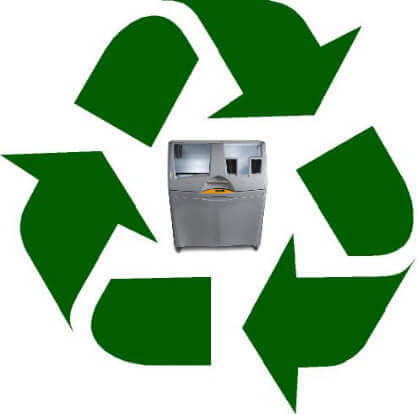Explore the Environmental Impact of 3D Printers
 Can 3D Printers Make Manufacturing More Energy Efficient?
Can 3D Printers Make Manufacturing More Energy Efficient?
As natural resources dwindle and climate change marches on, we’re constantly searching for new ways to sustainably produce goods. If you’re concerned with how your products are developed—are the materials and production processes “green”—then you’ll be interested to know what kinds of energy-efficient technologies the manufacturing industry is using.
3D printing, also known as additive manufacturing, is one of these alternative technologies to traditional production methods. Although automobile manufacturers have used 3D printers for several decades, they are now becoming more prevalent in other industries, such as biomedicine, aerospace, and retail/service. Let’s weigh the environmental pros and cons of 3D printing below.
Pros
3D printing has several advantages over mass production.
- Ideal for consumers and small-scale industries, certain 3D printers efficiently use environmentally friendly materials, such as polylactic acid (PLA), recycled plastic, and wood-based composite.
- Manufacturers can reduce the transportation of parts since parts can be made in-house with 3D printers.
- 3D printing can also manufacture up to 50% lighter parts, which again reduces fuel costs.
Cons
Despite these benefits, there are several deleterious effects of 3D printing.
- A fair amount of electrical energy is used in 3D printing, especially if the application requires low-layer thickness and high-temperature materials. Unless the energy is coming from mainly renewable sources, this certainly impacts the energy-saving benefits previously discussed.
- 3D plastic printers emit ultra-fine particles (UFPs) and can emit fumes with toxic by-products.
Solutions
So how can we minimize the negative factors and maximize the potential of 3D printing?
- Examine the environmental factors BEFORE production/product design
- Perform more research comparisons among printing approaches
- Study how specific design requirements could impact certain processes
Specifically, manufacturers and parts suppliers can optimize the number of parts printed simultaneously, minimize the waste in secondary materials, and improve material selection and processing for strength, surface finish, embodied energy, and melting point.1
With the global 3D printing industry expected to grow to $18.4 billion in 2020, there is no doubt that 3D printing technologies are here to stay. Hopefully, 3D printers will evolve to become more energy efficient. Until then, do you think 3D printing is worth it? How do you think 3D printers will become greener? Let us know in the comments below.
1. McAlister, Catriona and Wood, Jonathan, “The potential of 3D printing to reduce the environmental impacts of production,” eceee 2014 Industrial Summer Study.
